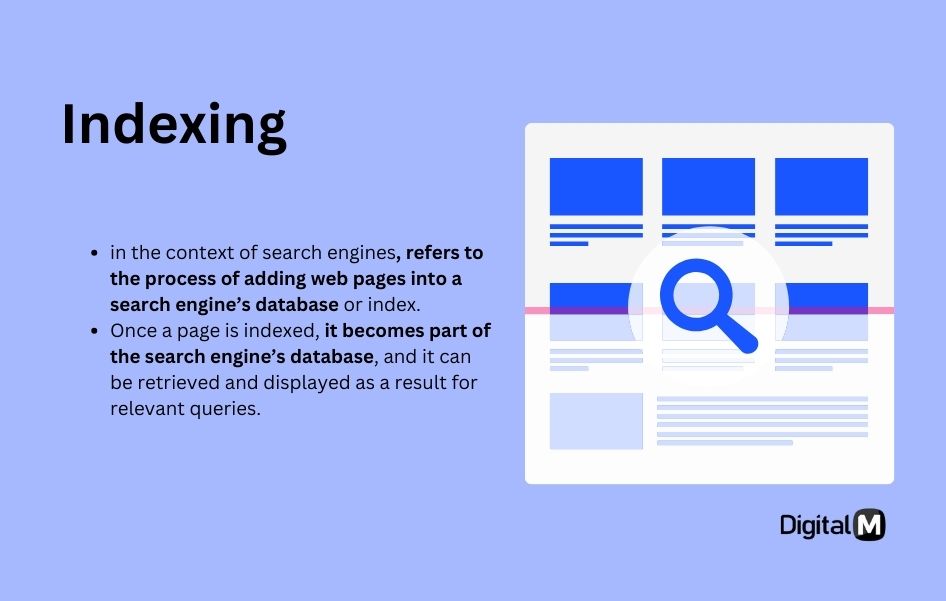Indexing
Indexing, in the context of search engines, refers to the process of adding web pages into a search engine’s database or index. Once a page is indexed, it becomes part of the search engine’s database, and it can be retrieved and displayed as a result for relevant queries.
Think of indexing as organizing a vast library of books. Each book (web page) is carefully categorized and recorded so that when someone searches for a specific topic, the librarian (search engine) can quickly locate and provide relevant books (web pages).

Key Points:
Crawling Precedes Indexing: Before a page can be indexed, search engine bots (crawlers) explore the web to discover and analyze content on different pages. Crawling is the process of navigating through the web and collecting information.
Database of Information: The index is like a massive database that search engines use to retrieve results quickly. It contains information about the content, keywords, and other factors that help determine the relevance of a page to a user’s query.
Algorithms and Ranking: Search engines use complex algorithms to analyze the indexed pages and rank them based on various factors like relevance, quality of content, and user experience. This ranking determines the order in which results are displayed in search engine results pages (SERPs).
Regular Updates: Search engines continually update their indexes to include new content, remove outdated or irrelevant information, and adjust rankings based on changes in algorithms or user behavior.
Example:
When you create a new webpage and publish it on the internet, search engine crawlers visit your page, analyze its content, and then index it. Once indexed, the page can appear in search results when users search for relevant terms.
In summary, indexing is the process by which web pages are added to a search engine’s database or index. It is a crucial step in the functioning of search engines, enabling them to quickly retrieve and display relevant results for user queries.

